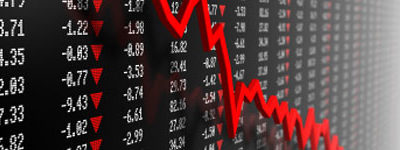%
Jubak’s Picks Performance 1997-2019
Jubak’s Picks
Buy and hold? Not really.
Short-term trading?
Not by a long shot.
So what is the stock-picking style of The Jubak’s Picks portfolio?
Click to expand...
Click to View the Jubak’s Picks Portfolio
I try to go with the market’s momentum when the trend is strong and the risk isn’t too high, and I go against the herd when the bulls have turned piggy and the bears have lost all perspective. What are the results of this moderately active — the holding period is 12 to 18 months — all-stock portfolio since inception in May 1997? A total return of 584% as of December 31, 2019. That compares to a total return on the S&P 500 stock index of 335% during the same period.
%
Top 50 Stocks Performance 2019
Top 50 Stocks
This long-term, buy-and-holdish portfolio was originally based on my 2008 book The Jubak Picks.
Trends that are strong enough, global enough, and long-lasting enough to surpass stock market averages.
Click to expand...
Click to view the Top 50 Stocks Portfolio
In The Jubak’s Picks Portfolio I identified ten trends that were strong enough, global enough, and long-lasting enough to give anyone who invested in them a good chance of beating the stock market averages.
To mark the publication of my new book on volatility, Juggling with Knives, and to bring the existing long-term picks portfolio into line with what I learned in writing that book and my best new ideas on how to invest for the long-term in a period of high volatility, I’m completely overhauling the existing Top 50 Picks portfolio.
You can buy Juggling with Knives at bit.ly/jugglingwithknives
%
Dividend Income Performance 2021
Dividend Income
Every income investor needs a healthy dose of dividend stocks.
Why bother?
Why not just concentrate on bonds or CDs?
Click to expand...
Click to view the Dividend Income Portfolio
Because all the different income-producing assets available to income investors have characteristics that make them suited to one market and not another. You need all of these types of assets if you’re going to generate maximum income with minimum risk as the market twists and turns.
For example: bonds are great when interest rates are falling. Buy early in that kind of market and you can just sit back and collect that initial high yield as well as the capital gains that are generated as the bonds appreciate in price with each drop in interest rates.
CDs, on the other hand, are a great way to lock in a yield with almost absolute safety when you’d like to avoid the risk of having to reinvest in an uncertain market or when interest rates are crashing.
Dividend stocks have one very special characteristic that sets them apart from bonds and CDs: companies raise dividends over time. Some companies raise them significantly from one quarter or year to the next. That makes a dividend-paying stock one of the best sources of income when interest rates start to rise.
Bonds will get killed in that environment because bond prices will fall so that yields on existing bonds keep pace with rising interest rates.
But because interest rates usually go up during periods when the economy is cooking, there’s a very good chance that the company you own will be seeing rising profits. And that it will raise its dividend payout to share some of that with shareholders.
With a dividend stock you’ve got a chance that the yield you’re collecting will keep up with rising market interest rates.
But wouldn’t ya know it?
Just when dividend investing is getting to be more important—becoming in my opinion the key stock market strategy for the current market environment—it’s also getting to be more difficult to execute with shifting tax rates and special dividends distorting the reported yield on many stocks.
I think there’s really only one real choice—investors have to pull up their socks and work even harder at their dividend investing strategy. That’s why I revamped the format of the Dividend Income portfolio that I’ve been running since October 2009. The changes aren’t to the basic strategy. That’s worked well, I think, and I’ll give you some numbers later on so you can judge for yourself. No, the changes are designed to do two things: First, to let you and me track the performance of the portfolio more comprehensively and more easily compare it to the performance turned in by other strategies, and second, to generate a bigger and more frequent roster of dividend picks so that readers, especially readers who suddenly have a need to put more money to work in a dividend strategy, have more dividend choices to work with.
Why is dividend investing so important in this environment? I’ve laid out the reasons elsewhere but let me recapitulate here. Volatility will create repeated opportunities to capture yields of 5%–the “new normal” and “paranormal” target rate of return–or more as stock prices fall in the latest panic. By using that 5% dividend yield as a target for buys (and sells) dividend investors will avoid the worst of buying high (yields won’t justify the buy) and selling low (yields will argue that this is a time to buy.) And unlike bond payouts, which are fixed by coupon, stock dividends can rise with time, giving investors some protection against inflation.
The challenge in dividend investing during this period is using dividend yield as a guide to buying and selling without becoming totally and exclusively focused on yield. What continues to matter most is total return. A 5% yield can get wiped out very easily by a relatively small drop in share price.
Going forward, I will continue to report on the cash thrown off by the portfolio—since I recognize that many investors are looking for ways to increase their current cash incomes. But I’m also going to report the total return on the portfolio—so you can compare this performance to other alternatives—and I’m going to assume that an investor will reinvest the cash from these dividend stocks back into other dividend stocks. That will give the portfolio—and investors who follow it—the advantage of compounding over time, one of the biggest strengths in any dividend income strategy.
What are some of the numbers on this portfolio? $29,477 in dividends received from October 2009 through December 31, 2013. On the original $100,000 investment in October 2009 that comes to a 29.5% payout on that initial investment over a period of 39 months. That’s a compound annual growth rate of 8.27%.
And since we care about total return, how about capital gains or losses from the portfolio? The total equity price value of the portfolio came to $119,958 on December 31, 2012. That’s a gain of $19,958 over 39 months on that initial $100,000 investment or a compound annual growth rate of 5.76%.
The total return on the portfolio for that period comes to $49,435 or a compound annual growth rate of 13.2%.
How does that compare to the total return on the Standard & Poor’s 500 Stock Index for that 39-month period? In that period $100,000 invested in the S&P 500 would have grown to $141,468 with price appreciation and dividends included.) That’s a total compounded annual rate of return of 11.26%.
That’s an annual 2 percentage point advantage to my Dividend Income portfolio. That’s significant, I’d argue, in the context of a low risk strategy.
Portfolio Related Posts
Watch my new YouTube video: It’s All About Water
My one-hundred-and-sixty-sixth YouTube video “It’s All About Water” went up today. In this video, I look at how global water scarcity could impact the chip industry, using Taiwan Semiconductor Manufacturing (TSM) as an example. I then provide some of my top picks for water stocks–more to come in an upcoming Special Report: Investing in Water Stocks on my JubakAm.com subscription site.
Circle Apple’s September 7 product(s) launch for next big positive for embattled tech sector
If you’re looking for a catalyst to move slumping technology shares higher, circle September 7. That’s the date for Apple’s (AAPL) launch event to unveil the new iPhone 14 line. It’s just one–but the biggest–of Apple’s product launches this fall. The company is expected to announce new Macs, low-end and high-end iPads, and three models for the Apple Watch.
I got these two key China trends wrong: Selling BABA and TCEHY
When I added Alibaba (BABA) to my Jubak’s Picks Portfolio on April 29, 2022, and Tencent Holdings (TCEHY) to my Volatility Portfolio on my subscription site JubakAM.com on January 3, 2022, I thought two things were about to happen in China. First, I thought that the People’s Bank would unleash enough stimulus to more than compensate for the slowdown in China’s economy. And, second, I thought that we’d seen the end of the regulatory crackdown on China’s big entrepreneurial technology companies. I got both trends wrong.
Chip makers say tough days ahead–I’m selling TSM and NXPI out of Jubak Picks
The chip boom is over–or at least coming to an end. Gartner has cut its outlook for revenue growth in 2022 to just 7.4%. That’s down from a forecast of 14% growth for chip revenue three months ago. Garner sees chip revenue falling 2.5% in 2023. And you don’t have to take the word of market watchers at Gartner.
3 sells for today’s CPI bounce–my goal is still to sell into this Bear Market rally
Despite today’s CPI inflation bounce and the continuation (flagging but still in business) of July’s Bear Market rally, my goal is still to sell into rallies. I don’t think this Bear Market is over and done with. I see another down leg when investors and traders admit that the Federal Reserve isn’t going to be able to get inflation under control with just another 100 basis points of interest rate increases (and, the other part of this hopeful scenario, to begin cutting interest rates by the middle of 2023.) So I’ll be making three sells today out of my Jubak Picks Portfolio to take advantage of the CPI bounce.
Another chip maker–this time is Micron–warns and chip stock take a hit
First, it was Nvidia (NVDA) cutting its guidance for revenue and earnings due on August 24. Today, August 9, it was Micron Technology (MU) warning that its revenue for the fourth-quarter revenue may come in at or below the bottom end of a forecast range provided in the company’s earnings call on June 30. Micron is scheduled to report on September 27. All this comes as the market is on edge anyway ahead of tomorrow’s report on CPI inflation. As of the close on Tuesday, August 9, shares of Micro Technology were down 3.74%. Shares of Nvidia were down another 3.97% after closing down 6.30% yesterday.
What to do about your oil stocks?
I’ve seen several comments on the site asking this question. I assume we’re talking about oil stocks in the short- and medium-term. In the long term, I think it’s clear that you should be thinking about selling these out of your portfolio at a profit (of course) whenever you can. Demand for oil will fall in the long-term–defining long-term as 5 years or more–or we can all count on figuring out how to survive 120-degree (Fahrenheit) heat. Today, August 5, is a good synopsis of what’s going on with oil and oil stocks in the short- and medium-term.
What to sell in a Bear Market rally–and two sells for Monday, Omnicom and Alcoa
I ended my recent post “This looks like the Bear Market rally I’ve been waiting for” on my subscription JubakAM.com site by saying “Enjoy the ride but look to sell shares of companies that look most exposed to the return of recession/high interest rates/inflation worries. That post had been up for all of 18 minutes before I got the perfectly reasonable question “Like what?” And I promised an answer so here are my preliminary thoughts on what I’d look to sell in a Bear Market rally










